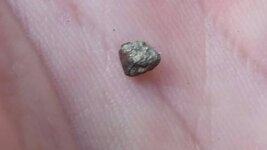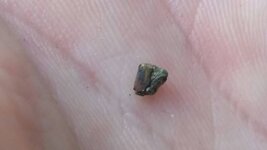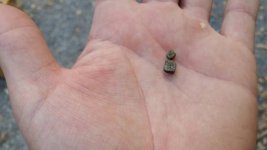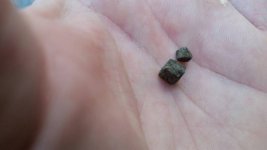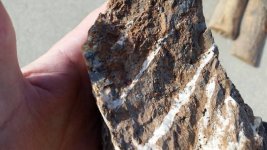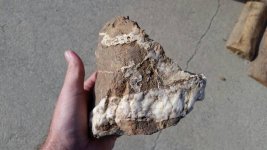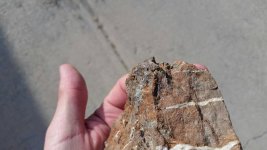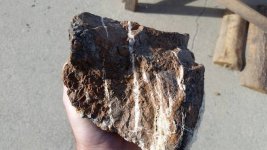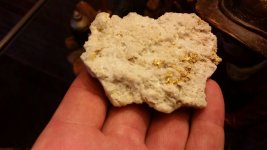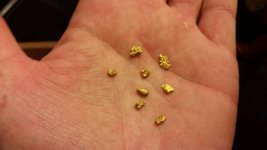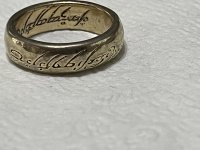Goldwasher
Gold Member
- May 26, 2009
- 6,077
- 13,225
- 🥇 Banner finds
- 1
- Detector(s) used
- SDC2300, Gold Bug 2 Burlap, fish oil, .35 gallons of water per minute.
- Primary Interest:
- All Treasure Hunting
- Thread starter
- #21
Limonite is a group of hydrated iron minerals that are often left over after the natural oxidation of the sulfur in iron pyrites. In my experience the minerals after pyrites are a spectrum. Local geologic and environmental factors influence what forms. Minerals morph and change over time w exposure. You got your limonites: hydrates and hydroxides of iron oxides. Usually yellowish spectrum/ crumbly friable. You got your straight oxides reddish sometimes hard layer forming, sometimes chalky. Then you get your "bog" irons form after prolonged exposure and leaching. Geothite. Just cause it's called big iron doesn't mean it formed in a swamp. Just lots of it found in those kinds of places historically. Suspect that's what's forming on the outer layers of the "slaggy" pieces.
The 'Slaggy" pieces take a polish.
The cubes do not


